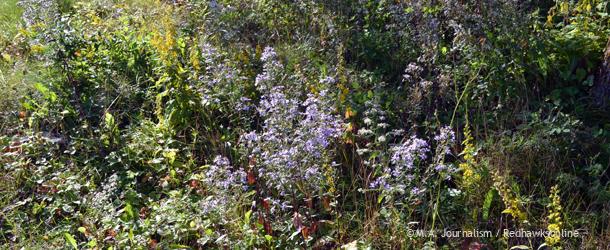Minnesota’s natural resources help provide for us all; now it’s time to give back to nature
On a hill leading down to a lake near Pelican Rapids, MN, a transformation is occurring. Regular lawn grass, the kind in many modern yards, is being replaced with prairie grasses and wildflowers native to the area. The monotonous green canvas is being taken over by purples, yellows, whites, and other bright hues of native flowers and prairie grasses. “The flowers, of course, are always a favorite, and they’re beautiful,” a spokeswoman for Prairie Restoration, Inc. told Outward Bound. “But it’s really the grasses that are… the backbone of the prairie.” Not only are the plants breaking up the monotony, they are also restoring this small, seemingly inconsequential patch of land to what it looked like in the early 19th century, before European settlers arrived. This is just one case of a substantially larger movement to replace unused lots, roofs of buildings, and large expanses of common bluegrass with native grasses.
This movement is being undertaken by many groups: corporations, non-profits, and hobbyists who want the land they use to return to its natural state. There are many advantages to this supplanting of bent and bluegrass: improved water management, resistance to droughts and floods, and resistance to common plant diseases. Many types of these natural landscapes exist, including woodland landscapes, prairie landscapes and rain gardens, all of which benefit the ecosystem.
These plants help the land they live on manage its water resources better. Having grown natively in the area for millennia, they have evolved to work with every bit of rainfall, runoff and river water that comes into their habitat. In fact, the St. Louis County Soil and Water Conservation District, in Missouri, offers financial incentives to property owners who put rain gardens on their land. Rain gardens are shallow, depressed sections of land that are filled with thirsty native plants inserted into a calculated table of topsoil, sand and coarser rock. This carefully perfected mixture of plants and inorganic material filters out rainwater and runoff from streets, roofs and other yards, returning the water to the water table instead of leaving the water to run off into streams and lakes, eroding natural landscapes and shorelines as it goes.
Another advantage to these native plants is their root systems; traditionally longer and tougher than an average bluegrass, they hold dirt, soil and minerals in the ground better than the yard grass. They also protect the quality of the soil in their ecosystem by reducing ground erosion and helping to maintain safer water table balance, rather than have the ecosystem’s health dictated by the extremes: droughts and floods.
And because they have lived on the land for so long, they require much less upkeep than a traditional bluegrass lawn. Being native species, they have are quite adept at reproducing in effectively. All of this means that areas with these native plants require far less long-term care than a regular lawn would. “Native landscape restoration is cheaper than turf grass,” PRI’s CEO Ron Bowen said to WCCO Radio’s Don Shelby, “when you consider the price of irrigation, topsoil and sod.”
Not only are these species beneficial to local ecosystems, but local ecosystems are good for them. Of 20,000 plant species native to North America, it is estimated that a quarter are at risk of extinction (National Park Service), and only 737 of those five thousand endangered species are protected by the Endangered Species Act.
A comprehensive list of volunteer options to help the land, can be found on the Minnesota Department of Natural Resources’ website.

